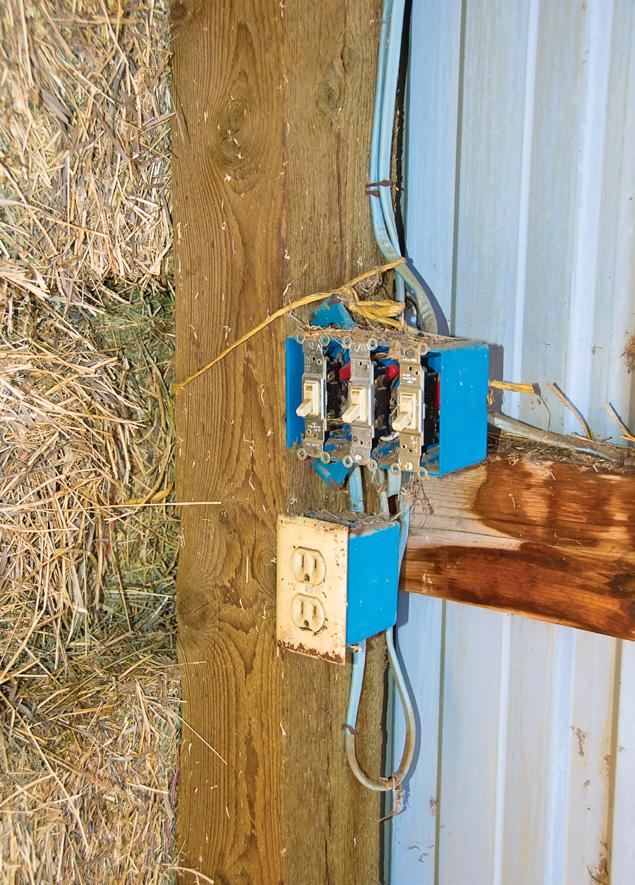
3 minute read
Handy Checklist
Cut the risk of a devastating barn fire.
A barn fire is every horse owner’s worst nightmare.
KATIE NAVARRA PHOTO Keep your fire extinguishers fully charged, and be sure that everyone at your barn knows how to use them.

A barn fire is every horse owner’s worst nightmare. Your stalled horse is particularly vulnerable, because barns are packed full of combustibles. Follow these expert steps to lower the risk of a devastating fire in your barn. ■ Ban smoking. Make your barn a
“no smoking” area—no exceptions. Post no-smoking signs in high-traffic areas in and around your barn, and enforce the ban. ■ Clean up. Keep your barn tidy, uncluttered, and clean. Eliminate cobwebs, scrap lumber, empty feed bags, gasoline cans, etc. ■ Remove flammables. Store combustible materials (hay, bedding, fuel, chemicals, paint, and gas-powered equipment) at least 50 feet from your barn. ■ Install extinguishers. Mount an
KATIE NAVARRA PHOTO Install wire or metal mesh cages to cover those overhead lights.

all-purpose Dry Chemical ABC fire extinguisher just inside each barn door, and put one in the tack room. Keep your fire extinguishers fully charged, and be sure that everyone at your barn knows how to use them. ■ Enclose electrical wiring. Enclose all permanent wiring in PVC conduit. (Stay away from metal conduit— your barn’s humidity will lead to corrosion.) Use extension cords only when absolutely necessary, and then use only heavy-duty models designed for outdoors. Be careful with seasonal items, such as fans and water heaters; use lengths of conduit to protect these cords, too. ■ Enclose stall lights. Install wire or metal mesh cages to protect overhead lights, which will help keep your horse from contacting and breaking them.
KATIE NAVARRA PHOTO Don’t overload your circuits. Adding extra sockets increases fire risk.

Consider replacing all your barn’s light bulbs with plastic-coated safety bulbs. Check that the bulbs are the correct wattage. ■ Don’t overload circuits.
Use as few electric appliances as possible, and disconnect those not actually in use. Avoid heat lamps, which can start a fire. If you must use one, keep it away from hay and bedding, and never use an extension cord. (Adding extra sockets increases fire risk and can invalidate your fire-insurance policy.) ■ Watch fuel and fumes.
Refuel your equipment outside your barn, and be careful when you drive your tractor, mower, or other machinery through it; exhaust fumes are combustible, too. ■ Manage manure. Don’t let manure build up in or near your barn; decomposing ma
KATIE NAVARRA PHOTO Remove cobwebs, which are flammable and can trap dust and hay.

nure creates heat. ■ Manage vegetation.
Vegetation is fire fuel. Keep grass mowed and weeds pulled; consider surrounding your barn with gravel instead of plantings. ■ Enhance your address. Be sure that your street number is clearly visible from the road so that your local fire department can find you in case of emergency. ■ Take action. If you notice small fire despite your prevention efforts, call the fire department immediately, then grab your fire extinguisher. Think PASS: Pull, Aim, Squeeze, Sweep. Pull the pin, aim the nozzle at the base of the flames, squeeze the trigger, and sweep the extinguisher from side to side, covering the fire area. After the fire is out, recharge or replace the extinguisher. — By Jessica Jahiel, PhD









